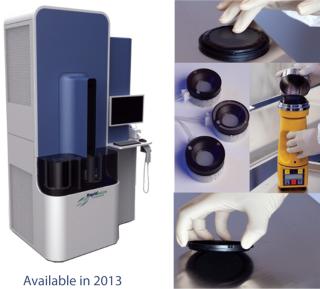Voices of Biotech
Podcast: MilliporeSigma says education vital to creating unbreakable chain for sustainability
MilliporeSigma discusses the importance of people, education, and the benefits of embracing discomfort to bolster sustainability efforts.
August 1, 2012

Rapid microbial testing methods continue to gain acceptance in pharmaceutical manufacturing, but experience shows that most companies still use traditional methods for their testing. The ability to deliver results in less time than traditional methods provides compelling benefits to manufacturers. Two key areas of microbial testing where these benefits can be realized include environmental monitoring and sterility testing.
Microbial testing must be completed throughout the manufacture of pharmaceuticals, including the raw materials phase, in-process phase, and release-testing phase. The use of rapid methods during these steps can reduce time and error; however, most companies still use methods that were popular in the 19th century.
Wider acceptance of rapid methods is hampered by constraints such as the method’s focus on one or two applications. Some methods are suited for water and bioburden, others for air, and others sterility. Some have more than one application, but not all. Some methods use reagents or detection techniques that destroy the microcolony, making microbial identification more difficult. Ultimately, there is a need for a technology that could address these issues and overcome implementation obstacles.

With the introduction of two applications in 2013, Rapid Micro Biosystems will support the key microbial QC applications in a laboratory, including water, bioburden, sterility, and environmental monitoring through its Growth Direct™ Technology.
The Growth Direct™ technology, currently in use for water and bioburden testing, is able to “see” colonies growing at around ∼100 cells without the use of reagents, but rather by tracking the natural autoflourescence of the cells. This provides a significant time advantage over the traditional method and allows the Growth Direct™ System to not only provide final results in about half the time of the traditional culture method, but also provide positive results in hours.
The system is built from customer input. Some guiding principles provided from current customers, prospects, industry experts, focus groups and surveys include details such as
Ensuring that sample preparation mirrors the current method, making training easier
Minimizing the footprint and maximizing the efficiency of the automation
Providing flexible and easy to use technology such that a user loads the technology and walks away. Automation does the rest
Supporting the unique needs of sterility testing (closed loop testing) and environmental monitoring (air, surface, personnel)
Leveraging a nondestructive technology, which maintains the sample for ID
Incorporating Lean Lab initiatives, the device should automate as much as possible
For more information about the Growth Direct™ System or to attend a hands-on workshop, visit www.rapidmicrobio.com.
About the Author
Author Details
Julie Sperry is chief commercial officer at Rapid Micro,[email protected]; www.rapidmicrobio.com
You May Also Like